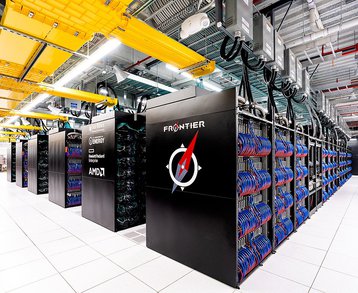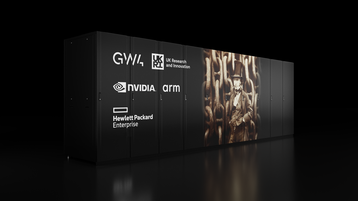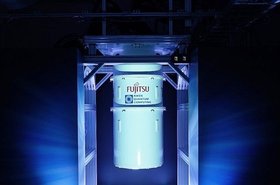The US remains the only country to officially operate an exascale-class supercomputer.
The 1.194 exaflops Frontier system, located at the Department of Energy’s Oak Ridge National Laboratory in Tennessee remains the No. 1 system on the Top500 list, the latest version of which was published this week.
RIKEN’s Fugaku system in Japan, CSC’s Lumi in Finland, CINECA’s Leonardo in Italy, and the DOE’s Summit system round out a top five unchanged from November 2022 – though some have seen upgrades. Frontier’s 92 petaflops upgrade would have been enough to earn the expansion alone a top-ten spot.
The top ten also remain unchanged, but the US has improved its standings on the overall list. The US has 150 systems on the Top500, up from 126 in November. China dropped from 162 systems to 134. Asia as a whole saw 192 machines on the list, North America 160 systems, and Europe 133 systems.
The Green500 list of most efficient systems was again topped by the Henri system at the Flatiron Institute in New York City, with an energy efficiency of 65.40 Gflops/Watt. The Lenovo & Intel-based Henri saw upgrades that also saw it jump from 405th spot to 225th on the overall Top500, with 2.88 petaflops of performance.
However, Frontier has not been pitted against the two Chinese exascale systems that launched in 2021. The Sunway OceanLight supercomputer is believed to be around 1.3 exaflops peak/1.05 exaflops sustained, and the Tianhe-3 is thought to be capable of 1.7 exaflops peak/1.3 exaflops sustained, but the country has not put them up for peer review.
More exaflops systems are set to come online this year. The US is still gearing up to launch the long-delayed Aurora system which should offer 2.4 exaflops. The upcoming El Capital is set to offer 2 exaflops when it also launches later this year. NERSC-10, set to launch in 2026, could offer 40 exaflops.
The European Commission aims to launch an exascale system in Germany in 2023, and the UK hopes to procure its own exaflops supercomputer soon.
India is planning to deploy its own exscale system using home-grown processors. Param-Shankhis is set to launch in 2024.
In other recent HPC news:
- SambaNova is to deliver one of its DataScale systems to the US Lawrence Livermore National Laboratory (LLNL) in Livermore, California.
- HPE & Nvidia have been selected to develop the UK’s new Isambard 3 supercomputer. The system, set for delivery to the Bristol & Bath Science Park next year, will feature 384 Nvidia Grace CPU Superchips, which Nvidia says will deliver around 2.7 petaflops of FP64 peak performance and consume less than 270 kilowatts of power.
The project is being led by the University of Bristol, as part of the research consortium the GW4 Alliance, together with the universities of Bath, Cardiff, and Exeter.
- HPE has also been selected by Tokyo Tech to build the Tsubame4.0 system. The HPE Cray XD6500 system is set to go live in Spring 2024.
Consisting of 240 nodes equipped with two 4th Gen AMD Epyc processors and four Nvidia H100 GPUs, it will offer a peak performance of 66.8 petaflops at 64-bit double precision, and 952 petaflops at 16-bit half-precision.
- Nvidia is making its UK-based Cambridge-1 system available to users through its DGX Cloud portal.
- Chemical firm BASF has launched a new 3 petaflops supercomputer at its Ludwigshafen site in Germany. The company claimed the HPE-AMD Quriosity system is the world’s largest supercomputer for industrial chemical research. The previous Quriosity supercomputer, a 1.75 petaflops system deployed in 2017, will be refurbished by HPE.
- Penguin Solutions has delivered a new supercomputer to the US Navy. The $35 million Nautilus system is housed at the Stennis Space Center in Mississippi and has a peak performance of 8.2 petaflops. It is one of six Navy-owned supercomputers.
Nautilus includes 1,352 compute nodes with 128 AMD Epyc Milan cores per node, 256 GB of memory per node for a total of 382TB, 16 Nvidia A40 visualization nodes, 32 Nvidia A100 quad GPU nodes, and 26 petabytes of DDN storage (including 4.15 petabytes of NVMe storage).
- Liqid has delivered two supercomputers to the US Army Research Laboratory DoD Supercomputing Resource Center (ARL DSRC).
The $32 million contract sees the delivery of the systems, named Jean and Kay, to the Aberdeen Proving Ground in Maryland. Jean is equipped with 588 Intel Xeon Platinum 9200 Nodes and 264 Nvidia A100 GPUs; Kay is equipped with 488 Xeon Nodes and 96 A100 GPUs.
- Lenovo is installing a new high-performance computer (HPC) at the Potsdam Institute for Climate Impact Research in Germany, set to be operational by August. The unnamed system will use Lenovo’s ThinkSystem SD665 V3 servers with integrated AMD Epyc 9004 processors and Nvidia H100 GPUS, totaling 30,000 cores, 240 nodes, and 185 TB of RAM.
- Lenovo is also working with Germany’s Leibniz Supercomputing Centre (LRZ) to build a prototype for the exascale-ready system planned for the middle of the decade. The new exascale-ready system is expected to be made at the end of 2023. The supercomputer is being funded by the Federal Ministry of Education and Research (BMBF) and the State of Bavaria, which are contributing €125 million.
- Lenovo has also signed a deal with Al Hathboor Bikal.ai to provide systems and expertise to support Al Hathboor Bikal.ai to build and operate a new sustainable data center at Sharjah Research Technology and Innovation Park (SRTIP) in the UAE.
- The EuroHPC MareNostrum is facing more delays. Sergi Girona, operations director for BSC said at ISC this week the timelines for the delayed systems have been pushed back further.
- The Cori supercomputer at the National Energy Research Scientific Computing Center (NERSC) will be retired at the end of May. The 30 petaflops Cray-based XC40 system was first installed at the lab in Berkeley, California in 2015. The system is named in honor of American biochemist Gerty Cori, the first American woman to win a Nobel Prize and the first woman to be awarded the prize in Physiology or Medicine. Plans for a replacement system, currently known as NERSC-10, are in development.
- The Shiv Nadar institution in India has launched its new Magus supercomputer. The IBM cluster features 63 compute nodes with a total capacity of 30 teraflops.
- Lenovo and Intel are deploying a new supercomputer for Argentina’s National Meteorological Service this month.
- The New Jersey Institute of Technology has launched its Wulver High-Performance Computing Environment at DataBank’s Piscataway, NJ EWR2 data center.








